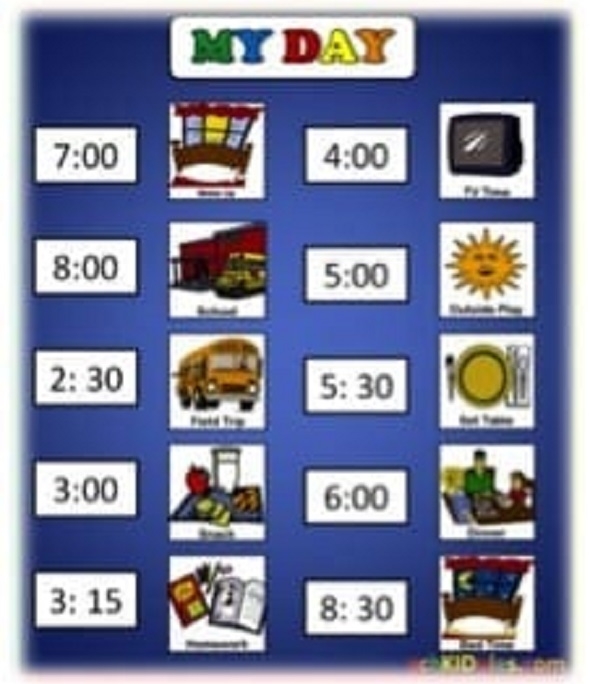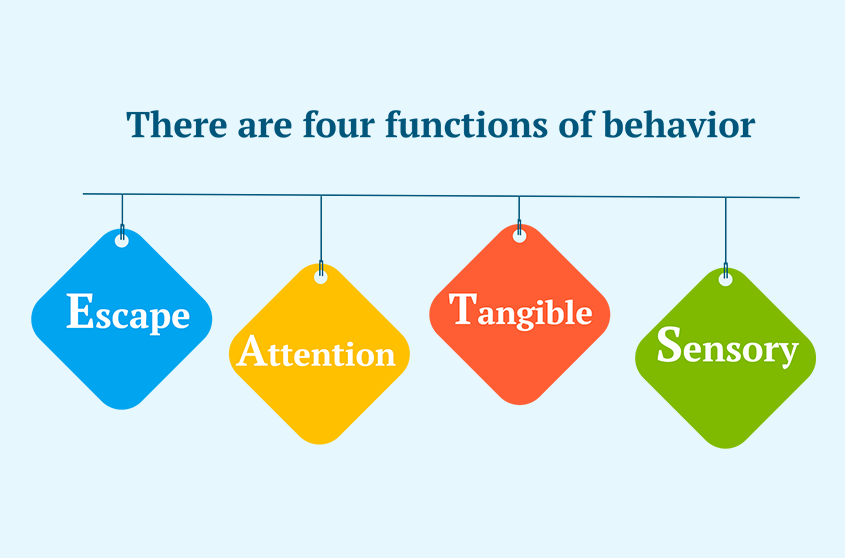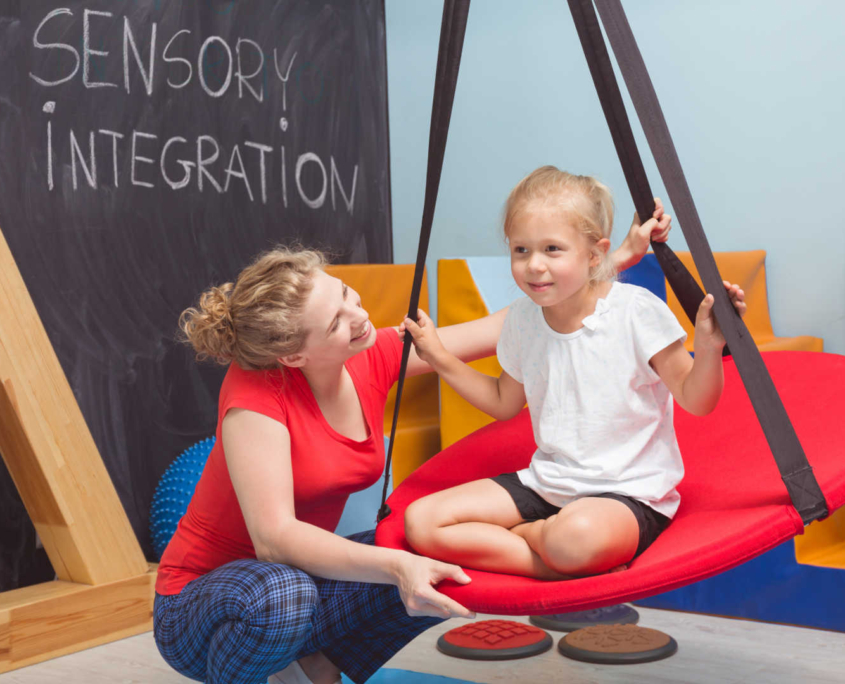Using Time Warnings To Help Students With Autism
Time warnings are a powerful tool to help students with autism navigate daily transitions with greater ease and confidence. Whether it’s moving from playtime to lunch or shifting between classrooms, transitions can be one of the most challenging parts of the day. For many autistic students, the sudden end of a preferred activity or the uncertainty of what comes next can trigger anxiety, resistance, or emotional distress. These moments aren’t just inconvenient—they can disrupt learning, relationships, and a child’s sense of safety.
Because students with autism often thrive on routine and predictability, introducing time warnings can gently prepare them for change. When used consistently, time warnings foster flexibility, reduce stress, and support smoother transitions across environments and tasks.
In this post, we’ll explore:
- What Are Time Warnings
- Why Use Time Warnings
- How To Use Time Warnings With Students With Autism
- Coupling auditory reminders with time warnings
- Coupling visual cues with time warnings
- Key Takeaways: Using Time Warnings to Support Students with Autism

Is it time? Do I need to get ready to go to my next class?
What are time warnings?
Time warnings are a frame of reference for students with autism to process how much time is left in an activity. Time warnings are actual timers or time limits being set to aid students with autism in transitioning either from activity to activity, environment to environment, or activity to reward. Without these time warnings, students with autism can be very distraught when it’s time to move and this can cause undesired behavior to occur. Time warnings can be used in addition to and with visual schedules as well as star charts. Time limits can be listed next to the item on visual schedules so that students with autism can set their own timer for the activity.
Why use time warnings
Time warnings are more than just countdowns—they’re proactive tools that support emotional regulation, executive functioning, and behavioral stability in students with autism. Transitions can be overwhelming, especially when they’re abrupt or unpredictable. For autistic learners, the shift from one activity to another often involves processing multiple changes: sensory input, social expectations, and task demands. Without adequate preparation, these moments can lead to anxiety, resistance, or behavioral escalation.
By introducing time warnings, caregivers and educators give students a chance to mentally and emotionally prepare for what’s coming next. This simple strategy helps reduce the cognitive load and creates a sense of control and predictability. It’s not just about avoiding meltdowns—it’s about building trust and teaching flexibility over time.
ABA therapists often use time warnings as part of antecedent strategies to reduce transition-related stress and teach flexibility.
From an ABA perspective, time warnings fall under antecedent modification—a technique that adjusts the environment before a behavior occurs. Instead of reacting to a challenging moment, we shape the conditions to prevent it. Time warnings act as gentle cues that signal change is coming, allowing students to shift gears more smoothly and with less distress.
When paired with visual schedules, auditory cues, and consistent routines, time warnings become part of a larger framework that fosters independence, emotional resilience, and success across settings.

How to use time warnings with students with autism
Using time warnings effectively takes consistency, patience, and practice. It’s not a one-time fix—it’s a skill that builds over time. The goal is to help students anticipate change, not fear it.
One way to make the process smoother is to involve the student in setting the timer. Whether it’s a large visual clock at home or a classroom timer, giving them control over the countdown helps build awareness and ownership. When students know a transition is coming, they’re better prepared to shift gears—emotionally and cognitively.
Abrupt transitions can feel jarring, especially if a student is deeply engaged in an activity they enjoy. Without enough time to process the shift, they may feel overwhelmed or resistant. Time warnings offer a buffer—a moment to adjust, prepare, and feel safe in the change.
Age-Specific Examples
- Preschoolers:
Use picture schedules with sand timers (hourglass) and simple phrases like “First blocks, then snack.” Visual cues paired with short verbal reminders help build routine and understanding. - Elementary Students:
Try digital timers alongside verbal countdowns: “Five more minutes of reading, then we’ll clean up.” Pair this with consistent classroom routines to reinforce predictability. - Teens:
Incorporate phone alarms, written agendas, or calendar apps. These tools foster independence while still providing structure. A simple heads-up like “You’ve got 10 minutes until your next class” can go a long way.
No matter the age, the key is to make time warnings part of a predictable rhythm. When students know what to expect—and when—it builds trust, reduces anxiety, and supports smoother transitions throughout the day.
Coupling auditory reminders with time warnings to help students with autism
While a physical timer that beeps when finished is a helpful auditory cue, it’s just one of many sound-based strategies that can support smoother transitions. Pairing auditory reminders with time warnings can reinforce predictability and reduce anxiety for students with autism.
Some effective auditory tools include:
- A bell or chime
- Verbal “time left” reminders
- Natural task-end cues paired with a reward
A bell or soft chime can signal that an activity is ending and it’s time to move on. These sounds are gentle enough to avoid sensory overwhelm, yet distinct enough to catch attention. They work well in both classroom and home settings.
Teachers and caregivers can also use verbal countdowns. Even if a timer is visible, a student deeply engaged in an activity may miss the visual cue. Saying “five minutes left” or “two more minutes” out loud helps anchor their awareness and prepare them emotionally for the shift.
Multiple reminders work best. Repeating time-left cues at intervals creates a steady rhythm that supports processing and reduces the chance of surprise or resistance.
In addition, many activities have a natural ending—like finishing a puzzle, completing a chart, or wrapping up a game. Verbalizing this progression can ease the transition.
For example: “Just two more puzzle pieces, then it’s time for recess.”
This kind of cue not only signals closure but also connects the end of one task to the beginning of something positive, reinforcing motivation and emotional regulation.

Coupling visual cues with time warnings to help students with autism
Many students with autism benefit from visual supports like if/then or first/next charts. These tools clearly show what task comes first and what follows—whether it’s another activity, a reward, or a change in environment.
Because autistic learners often thrive on visual structure, pairing these charts with time warnings can make transitions smoother and more predictable.
Visual cues can also come naturally from the task itself. For example, if a student is working through a stack of cards, watching the pile shrink becomes a visual signal that the activity is nearing its end.
Timers are another helpful visual. Seeing the countdown reinforces the idea that time is passing and a transition is coming. This can reduce anxiety and build trust in the routine.
For students who are sensitive to sound, signing the word “finished” at the end of a task offers a gentle, non-verbal cue that the activity is complete. It’s a respectful way to communicate closure without overwhelming their senses.
Key Takeaways: Using Time Warnings to Support Students with Autism
- Time warnings ease transitions
They help students with autism prepare for change, reducing anxiety and resistance during daily shifts in activity or environment. - Consistency builds success
Introducing time limits takes practice and patience, but over time, they can lead to smoother, more predictable days for both students and educators. - Promotes student ownership
Time warnings encourage students to take responsibility for their own transitions, fostering independence and emotional regulation. - Pair with visual and auditory cues
Combining timers with charts, verbal reminders, bells, or natural task-end signals strengthens the effectiveness of time warnings. - Practice makes progress
The more consistently time warnings are used, the more familiar and comforting they become—creating a supportive rhythm for everyone involved.
At LeafWing Center, we understand that every child with autism has unique needs—and that transitions can be one of the most challenging parts of the day. Our experienced ABA therapists are here to guide you in introducing time warnings that are tailored to your child’s environment, communication style, and developmental level.
Whether you’re a parent navigating routines at home or a teacher managing classroom flow, we’ll help you build a personalized strategy that combines visual cues, auditory reminders, and compassionate support. Together, we’ll create smoother transitions and more confident moments—for your child and for you.
Ready to get started? Let LeafWing Center help you build a personalized time warning strategy that fits your child’s unique needs. Call us today to get started.
Glossary Terms
Other Related Articles
- Transition Strategies For Autistic Students
- Strategies For Autism In The Classroom
- How To Use Visuals To Help Students With Autism
- Choice Boards And “Wait” Support For Students With Autism In The Classroom
Frequently asked questions about ABA therapy
What is ABA Therapy used for?
ABA-based therapy can be used in a multitude of areas. Currently, these interventions are used primarily with individuals living with ASD; however, their applications can be used with individuals living with pervasive developmental disorders as well as other disorders. For ASD, it can be used in effectively teaching specific skills that may not be in a child’s repertoire of skills to help him/her function better in their environment whether that be at home, school, or out in the community. In conjunction with skill acquisition programs, ABA-based interventions can also be used in addressing behavioral excesses (e.g., tantrum behaviors, aggressive behaviors, self-injurious behaviors). Lastly, it can also be utilized in parent/caregiver training.
In skill acquisition programs, a child’s repertoire of skills is assessed in the beginning phase of the services in key adaptive areas such as communication/language, self-help, social skills, and motor skills as well. Once skills to be taught are identified, a goal for each skill is developed and then addressed/taught by using ABA-based techniques to teach those important skills. Ultimately, an ABA-based therapy will facilitate a degree of maintenance (i.e., the child can still perform the learned behaviors in the absence of training/intervention over time) and generalization (i.e., the learned behaviors are observed to occur in situations different from the instructional setting). These two concepts are very important in any ABA-based intervention.
In behavior management, the challenging behaviors are assessed for their function in the beginning phase of the services. In this phase, the “why does this behavior happen in the first place?” is determined. Once known, an ABA-based therapy will be developed to not just decrease the occurrence of the behavior being addressed, but also teach the child a functionally-equivalent behavior that is socially-appropriate. For example, if a child resorts to tantrum behaviors when she is told she cannot have a specific item, she may be taught to accept an alternative or find an alternative for herself. Of course, we can only do this up to a certain point—the offering of alternatives. There comes a point when a ‘no’ means ‘no’ so the tantrum behavior will be left to run its course (i.e., to continue until it ceases). This is never easy and will take some time for parents/caregivers to get used to, but research has shown that over time and consistent application of an ABA-based behavior management program, the challenging behavior will get better.
In parent training, individuals that provide care for a child may receive customized “curriculum” that best fit their situation. A typical area covered in parent training is teaching responsible adults pertinent ABA-based concepts to help adults understand the rationale behind interventions that are being used in their child’s ABA-based services. Another area covered in parent training is teaching adults specific skill acquisition programs and/or behavior management programs that they will implement during family time. Other areas covered in parent training may be data collection, how to facilitate maintenance, how to facilitate generalization of learned skills to name a few.
There is no “one format” that will fit all children and their families’ needs. The ABA professionals you’re currently working with, with your participation, will develop an ABA-based treatment package that will best fit your child’s and your family’s needs. For more information regarding this topic, we encourage you to speak with your BCBA or reach out to us at info@leafwingcenter.org.
Who Can Benefit From ABA Therapy?
There is a common misconception that the principles of ABA are specific to Autism. This is not the case. The principles and methods of ABA are scientifically backed and can be applied to any individual. With that said, the U.S. Surgeon General and the American Psychological Association consider ABA to be an evidence based practice. Forty years of extensive literature have documented ABA therapy as an effective and successful practice to reduce problem behavior and increase skills for individuals with intellectual disabilities and Autism Spectrum Disorders (ASD). Children, teenagers, and adults with ASD can benefit from ABA therapy. Especially when started early, ABA therapy can benefit individuals by targeting challenging behaviors, attention skills, play skills, communication, motor, social, and other skills. Individuals with other developmental challenges such as ADHD or intellectual disability can benefit from ABA therapy as well. While early intervention has been demonstrated to lead to more significant treatment outcomes, there is no specific age at which ABA therapy ceases to be helpful.
Additionally, parents and caregivers of individuals living with ASD can also benefit from the principles of ABA. Depending on the needs of your loved one, the use of specified ABA techniques in addition to 1:1 services, may help produce more desirable treatment outcomes. The term “caregiver training” is common in ABA services and refers to the individualized instruction that a BCBA or ABA Supervisor provides to parents and caregivers. This typically involves a combination of individualized ABA techniques and methods parents and caregivers can use outside of 1:1 sessions to facilitate ongoing progress in specified areas.
ABA therapy can help people living with ASD, intellectual disability, and other developmental challenges achieve their goals and live higher quality lives.
What does ABA Therapy look like?
Agencies that provide ABA-based services in the home-setting are more likely to implement ABA services similarly than doing the same exact protocols or procedures. Regardless, an ABA agency under the guidance of a Board-Certified Behavior Analyst follows the same research-based theories to guide treatment that all other acceptable ABA agencies use.
ABA-based services start with a functional behavior assessment (FBA). In a nutshell, a FBA assesses why the behaviors may be happening in the first place. From there, the FBA will also determine the best way to address the difficulties using tactics that have been proven effective over time with a focus on behavioral replacement versus simple elimination of a problem behavior. The FBA will also have recommendations for other relevant skills/behaviors to be taught and parent skills that can be taught in a parent training format to name a few. From there, the intensity of the ABA-based services is determined, again, based on the clinical needs of your child. The completed FBA is then submitted to the funding source for approval.
One-on-one sessions between a behavior technician and your child will start once services are approved. The duration per session and the frequency of these sessions per week/month will all depend on how many hours your child’s ABA services have been approved for—usually, this will be the number recommended in the FBA. The sessions are used to teach identified skills/behaviors via effective teaching procedures. Another aspect of ABA-based services in the home-setting is parent training. Parent training can take many forms depending on what goals have been established during the FBA process. The number of hours dedicated for parent training is also variable and solely depends on the clinical need for it. If a 1:1 session is between a behavior technician and your child, a parent training session or appointment is between you and the case supervisor and with and without your child present, depending on the parent goal(s) identified. Parent training service’s goal is for you to be able to have ample skills/knowledge in order for you to become more effective in addressing behavioral difficulties as they occur outside of scheduled ABA sessions. Depending on the goals established, you may be required to participate in your child’s 1:1 sessions. These participations are a good way for you to practice what you have learned from the case supervisor while at the same time, having the behavior technician available to you to give you feedback as you practice on those new skills.
As mentioned in the beginning, no two ABA agencies will do the same exact thing when it comes to providing ABA services; however, good agencies will always base their practice on the same empirically-proven procedures.
How do I start ABA Therapy?
In most cases, the first item required to start ABA therapy is the individual’s autism spectrum disorder (ASD) diagnosis report. This is typically conducted by a doctor such as a psychiatrist, psychologist, or a developmental pediatrician. Most ABA therapy agencies and insurance companies will ask for a copy of this diagnosis report during the intake process as it is required to request an ABA assessment authorization from the individual’s medical insurance provider.
The second item required to start ABA therapy is a funding source. In the United States, and in cases where Medi-Cal or Medicare insurances are involved, there is a legal requirement for ABA services to be covered when there is a medical necessity (ASD diagnosis). Medi-Cal and Medicare cover all medically necessary behavioral health treatment services for beneficiaries. This typically includes children diagnosed with ASD. Since Applied Behavior Analysis is an evidence based and effective treatment for individuals with ASD, it is considered a covered treatment when medically necessary. In many cases, private insurance will also cover ABA services when medically necessary, however in these cases, it is best to speak directly with your medical insurance provider to determine the specifics of the coverage and to ensure that ABA is in fact, a covered benefit. Additionally, some families opt to pay for ABA services out-of-pocket.
The next step to starting ABA therapy is to contact an ABA provider whom you are interested in working with. Depending on your geographic location, ABA agencies exist in many cities across the United States. Your insurance carrier, local support groups, and even a thorough online search can help you find reputable and properly credentialed ABA agencies near you. Our organization, LeafWing Center, is based in southern California and is recognized for aiding people with ASD achieve their goals with the research based on applied behavior analysis.
Once you have identified the ABA provider with whom you wish to work, they should help you facilitate the next steps. These will include facilitating paperwork and authorizations with your funding source. Once the assessment process begins, a BCBA (Board Certified Behavior Analyst) or qualified Program Supervisor should get in contact with you to arrange times in which interviews with parents/caregivers and observations of your loved one can be conducted. This will help in the process of gathering important clinical information so that with your collaboration, the most effective treatment plans and goals can be established for your loved one. This process is referred to as the Functional Behavior Assessment (FBA) and is elaborated on in different blog posts on our website. With regard as to what can be expected once ABA therapy begins, please read our blog post titled: When You Start an ABA program, What Should You Reasonably Expect from Your Service Provider?
















